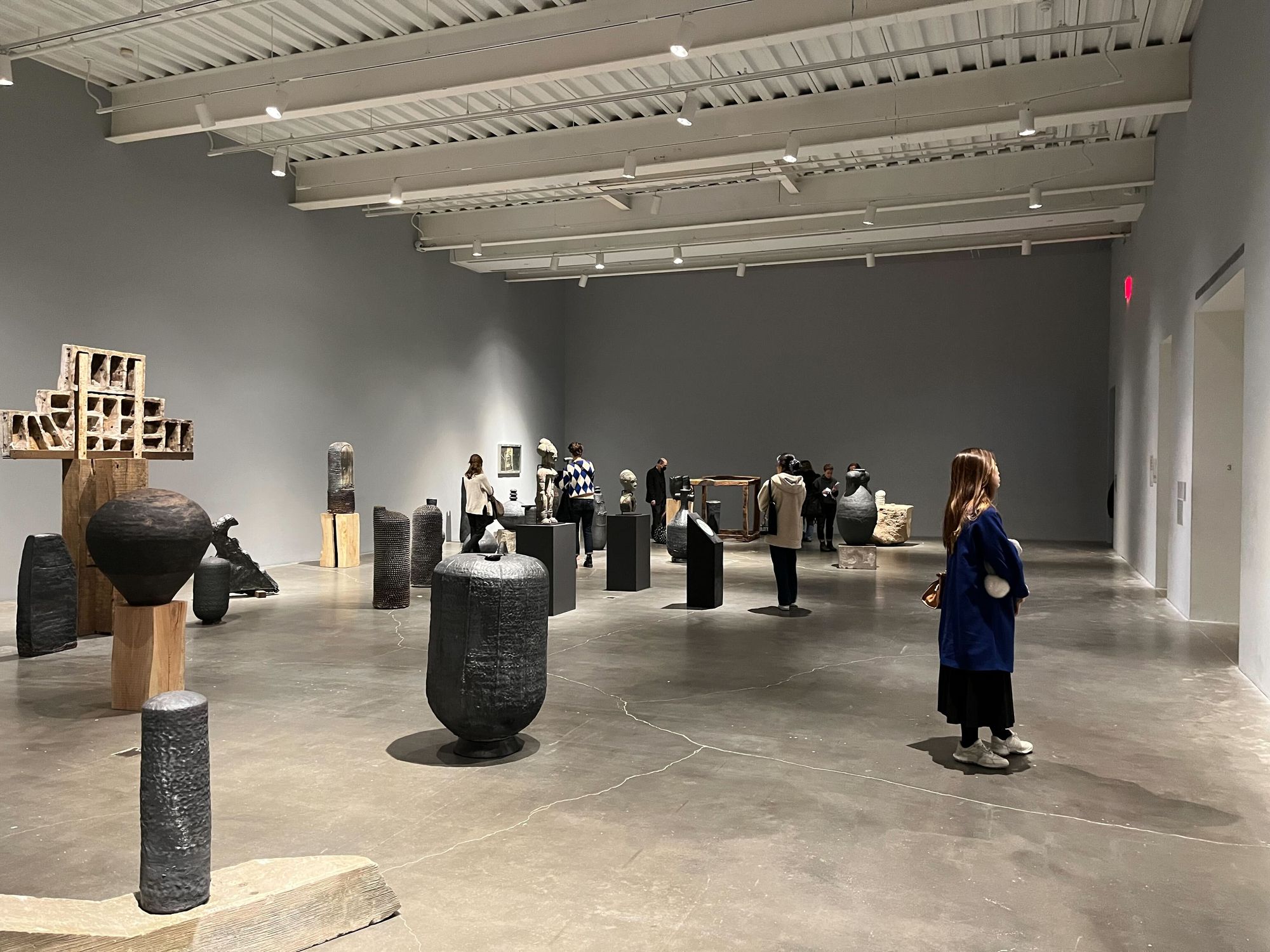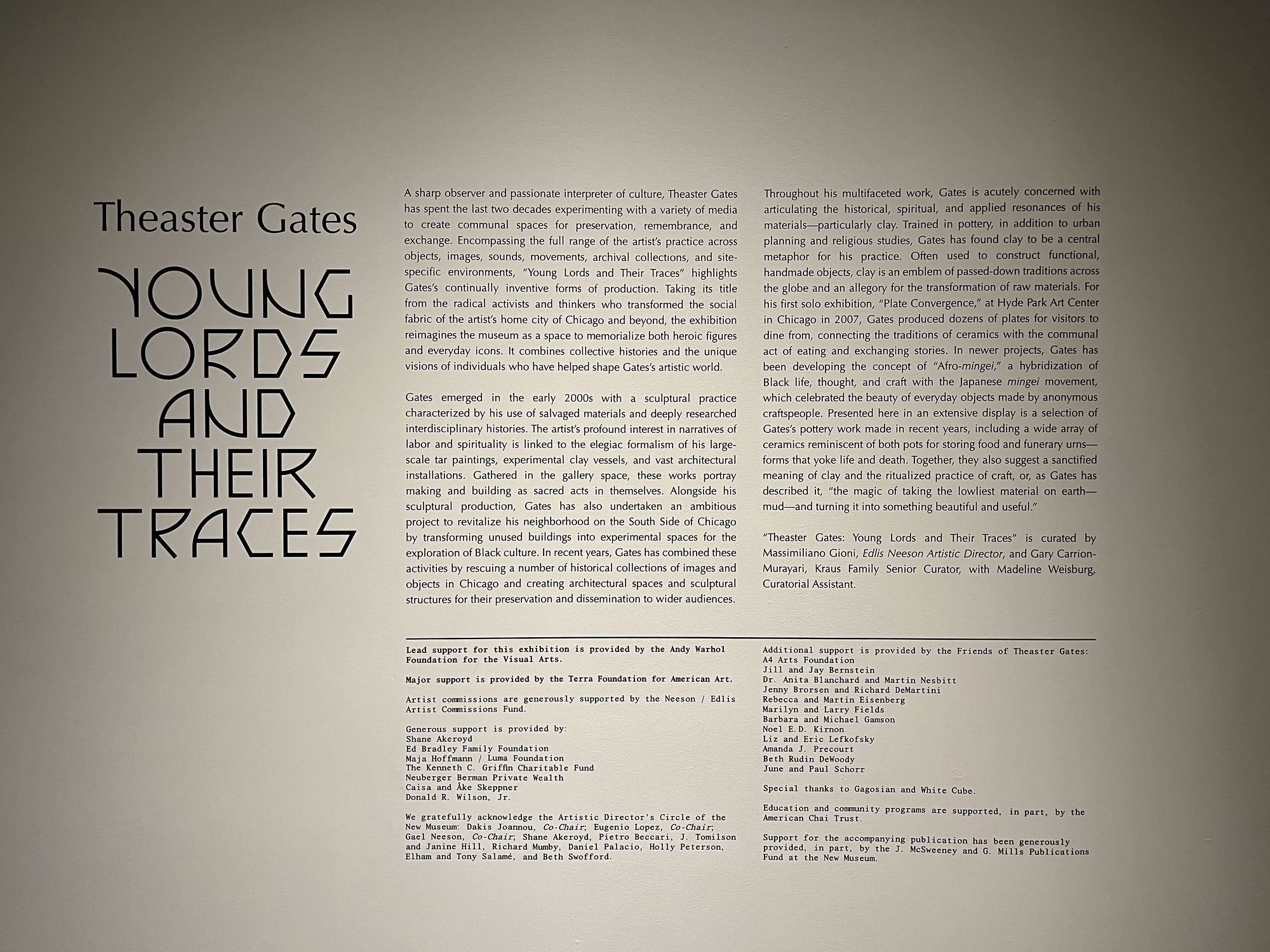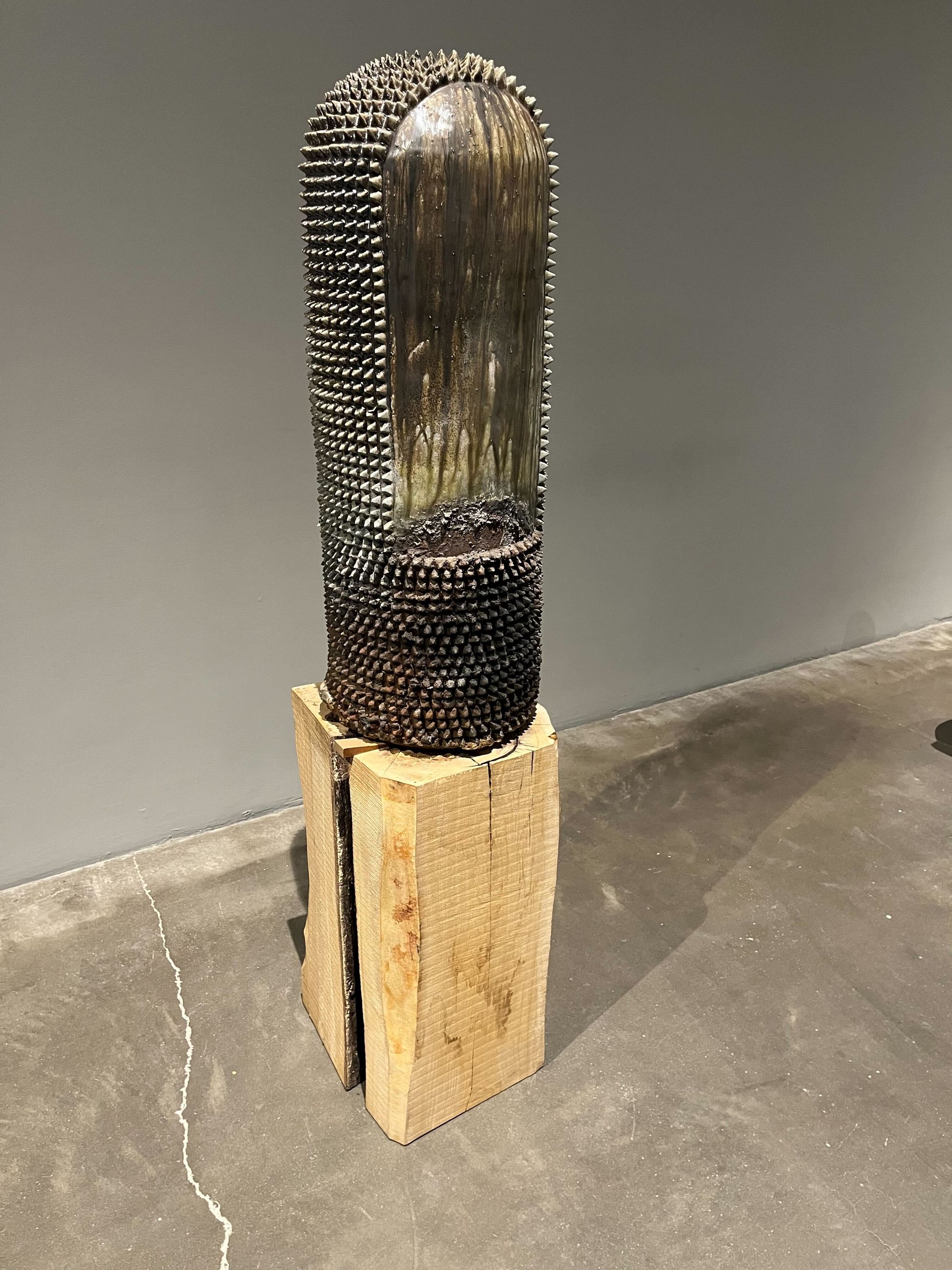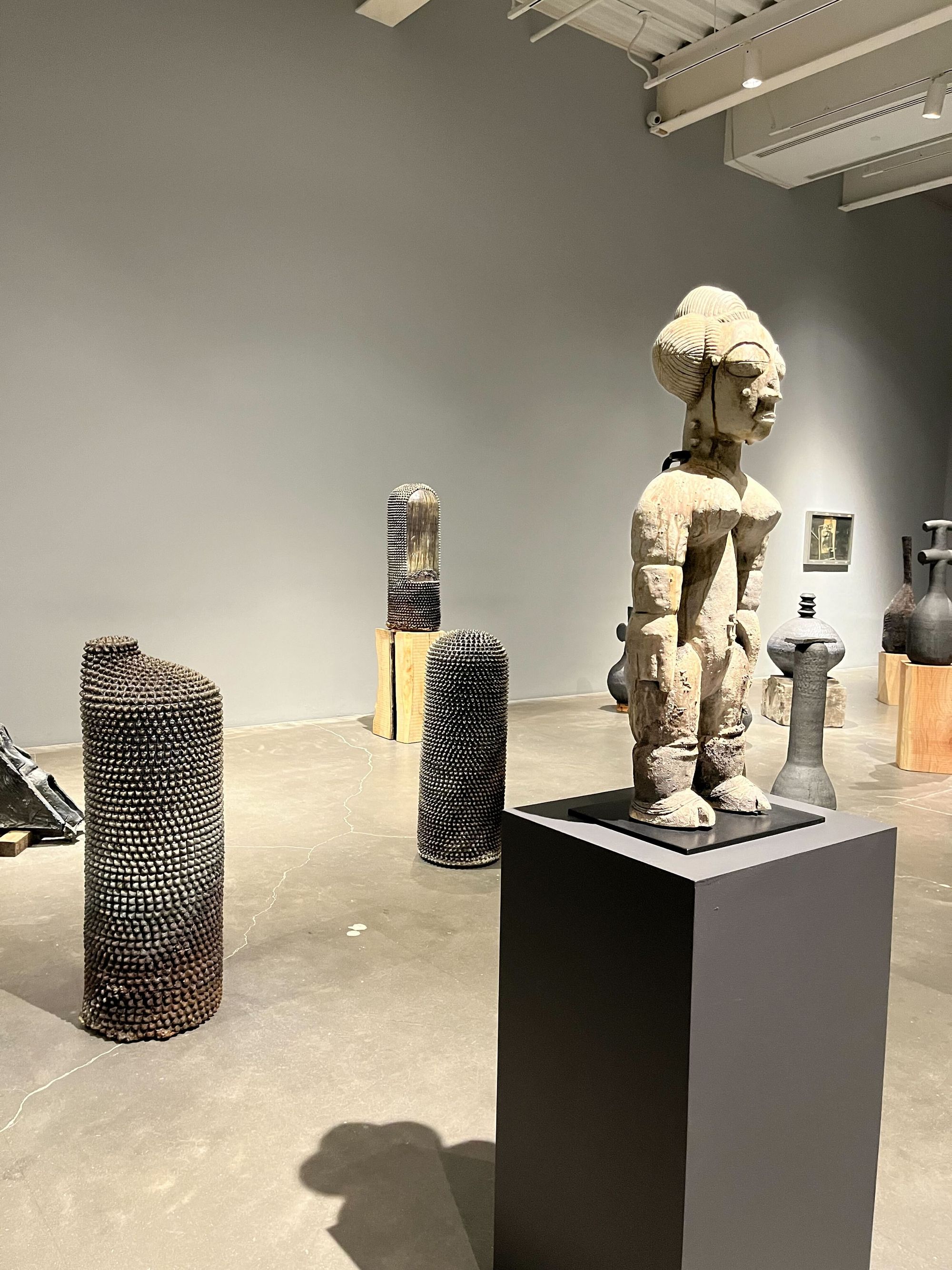“Young Lords and Their Traces” at New Museum, NYC, highlights Theaster Gates’ inventive forms of production.
Referring in title to radical activists and thinkers who transformed the social fabric of Chicago, the exhibition reimagines the museum as a place for both heroic figures and everyday icons.
As observer and passionate interpreter of culture, Gates experiments with practices across objects, images, sounds, movements, archives and site specific elements that create communal spaces for preservation, remembrance, and exchange.
Alongside his sculptural production, Gates has also undertaken an ambitious project to revitalize his neighborhood on the South Side of Chicago by transforming unused buildings into experimental spaces for the exploration of Black culture.
The artist frequently incorporates utopian ideals of communal gathering passed down through traditions of spiritualism, music, sound, and performance.
Gates is concerned with the historical, spiritual, and applied meanings of his materials — particularly clay. Trained in pottery, urban planning and religious studies, clay is a central metaphor for his practice.
In one show, Gates produced dozens of plates for visitors to dine from, connecting the traditions of ceramics with the communal act of eating and exchanging stories. In newer projects, Gates has been developing the concept of “Afro-mingei,” a hybridization of Black life, thought, and craft with the Japanese mingei movement, which celebrated the beauty of everyday objects made by anonymous craftspeople.
As Gates says, its “the magic of taking the lowliest material on earth-mud--and turning it into something beautiful and useful.”











